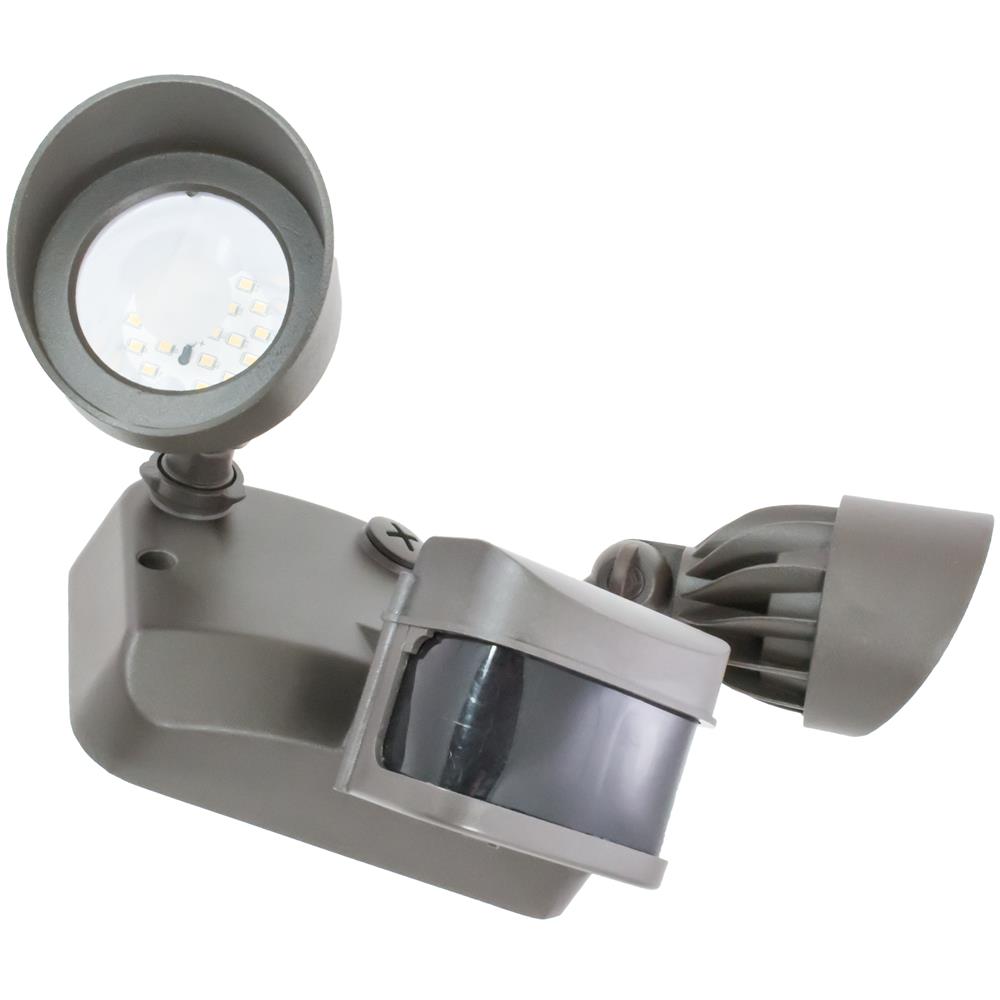
Outdoor motion sensor lights can be the perfect solution for lighting up your home and property after dark. If you’ve ever been worried about coming home to a dark house late at night, about the safety of your guests as they’ve had to navigate to and from their cars after sunset, or about any strange nocturnal noises in your yard, outdoor motion sensor lights can help put your mind at ease.
Best of all – outdoor motion sensor lights can be affordable and quite simple to install!
Here’s a quick and easy guide to help you choose and set up the perfect arrangement of motion sensor lighting for your home:
1. What are Outdoor Motion Sensor Lights
First things first, it’s important to understand just what motion detector lighting is and how it works.
Motion detectors are electronic devices that sense the infrared heat waves that are generated by moving objects. Most motion detectors used for outdoor lighting are designed to be especially sensitive to warmer moving objects, like people, animals, and cars. When the detector senses movement across its field of view, it will send an electric signal that automatically turns a light on.
How long the light stays on will generally be up to you, as most outdoor motion sensor lights come with timers that you can preset. Unless the detector senses more movement, it will then shut off automatically.
Most motion sensor lights have a field of view that is semi-circular, sometimes up to 240 degrees, and an adjustable distance range that can extend sometimes to up to 70 feet. Many homeowners have shied away from using motion sensor lights because they’re concerned about “false alarms,” when the light is triggered, for example, by a passing car or blowing leaves. However, you can prevent most of these “false alarms” by adjusting the setting for the distance range and by carefully aiming the sensor to a specific field of view.
Some outdoor motion sensor lights are designed so that they can be used like conventional manual lighting when you choose so that the light can stay on or off regardless of any motion. Then you typically just need to double flip the switch to return to the motion sensing feature.

2. What Lights Should You Buy
In order to determine what kind of lighting you ought to buy, first you need to assess your property and decide where and how much light you need.
Do you need light right next to your front door, along a pathway, above a garage, illuminating a large portion of your backyard? A smaller decorative light, like a pendant or sconce, is probably ideal by your door, but you will want a bigger, brighter floodlight if you’re trying to light up a whole yard.
The direction of the light matters as well. If the light is pointing in the direction of a neighbor’s home or will be illuminating an area right outside a window, you’ll probably want to use a smaller, lower wattage bulb.
Many homeowners like to replace existing outdoor lighting with a motion sensing alternative. If that’s your plan, you will want to pay attention to what the field of view will be. Some adjustments in height and placement might be necessary to effectively capture motion.
3. How to Install Your Outdoor Motion Sensor Lights
Once you’ve purchased and are ready to install your new motion sensor lights, here are the basic steps to follow:
- Go to your electrical panel and make sure to turn off the breaker and the switch for the light fixture you want to replace. Once everything is shut off, you can safely remove the old light fixture and get ready to install the new one.
- Though lighting models will vary, the wiring should be similar – connect white to white, black to black, and if there’s a ground wire make sure it’s attached to the electrical box.
- Once the wires are connected, make sure the motion light is securely attached using any hardware that’s provided.
- Turn on the breaker, flip the switch, and test to see how the light works. You will want to check out the range in which motion will be detected in order to make any desired adjustments.
- Quick tip: if the light turns on too often or in too wide a range even after you’ve adjusted it, you can try using electrical tape to cover portions of the sensor until you get your desired range of sensitivity.
For more lighting inspiration and to check out Going Lighting’s collection outdoor motion sensor lights.